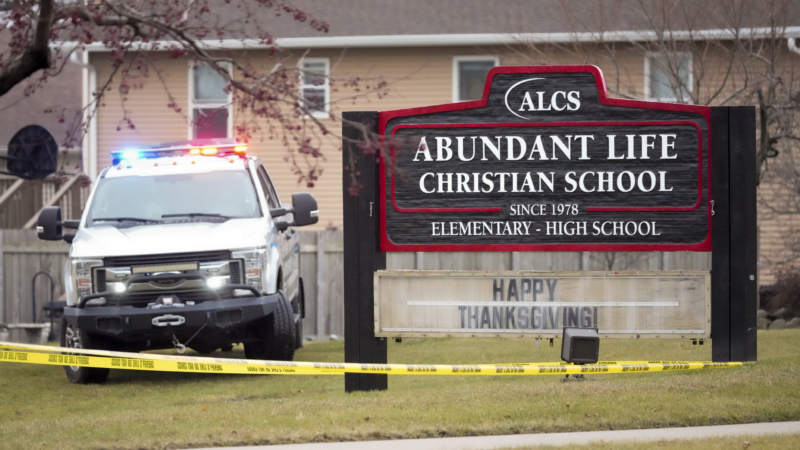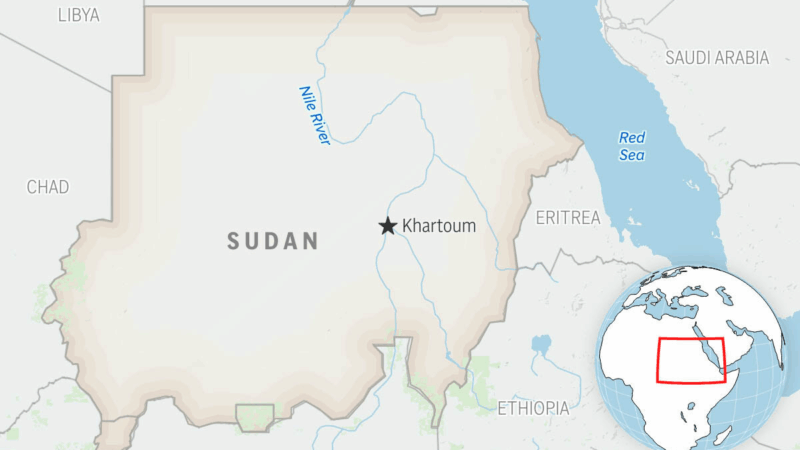Experts warn that recent school shootings show growth in new radicalization pattern
Two recent school shootings are highlighting what extremism researchers see as a growing — and poorly understood — trend among young people who embrace mass violence.
The attacks, at high schools in Madison, Wis., and Nashville, Tenn., defy categories that law enforcement and researchers have long used to understand radicalization pathways, such as radical Islamist terrorism and white nationalist terrorism. Instead, some researchers say these attacks are examples of “nonideological” terrorism. They say these attacks appear to be the result of several antisocial, decentralized, online networks coming together in ways that encourage and inspire younger children to commit atrocities.
“It’s really about that violence for the sake of violence,” said Matthew Kriner, managing director of the Accelerationism Research Consortium. “There is a growth of intention and design within certain subcultures and subnetworks to inculcate that belief into younger people.”
In December, Natalie “Samantha” Rupnow killed a student, a substitute-teacher coordinator and herself at Abundant Life Christian School in Madison. The following month, 17-year-old Solomon Henderson killed himself and another student at Antioch High School in Nashville. Both appear to have been heavily influenced by mass killers of the past and preoccupied with the prospect of adding themselves to such a list.
“This is sort of the next chapter of what we could call ‘far-right violence’ looks like at this stage or what terrorism looks like,” said Kriner. “One thing that we’re trying to get people to start to wrap their heads around is that anything and everything is becoming a viable pathway to violence.”
The True Crime Community
Since the Columbine High School massacre in 1999, shared-interest groups of people who obsess over mass killings have developed across social media platforms. Known as the True Crime Community (TCC), participants delve into detail about perpetrators’ backgrounds and how they carried out attacks. Sometimes users share fan fiction inspired by true-life shootings.
Both Rupnow’s and Henderson’s apparent writings indicate that they were immersed in these cultures. Rupnow cited attacks in Finland, Turkey, Crimea and Brazil, among other places, referring to some perpetrators as “One true ideal” or “An Ultimate saint.” Henderson, too, listed past killers whom he saw as inspiration for his attack.
But experts say that while there are darker corners of the internet that do encourage violent action, the TCC has not generally been one of them.
“Within the TCC, you don’t see these blatant calls for violence in the same way that you might in neo-Nazi circles online,” said Cody Zoschak, a senior manager at the Institute for Strategic Dialogue.
However, Zoschak says his team is now finding that a growing number of school shooting plots appear to tie back to the TCC.
“At this point, we have tracked at least seven, and likely more, school shootings or disrupted school shooting plots in the United States linked to TCC individuals in 2024 alone,” he said. “This is a pretty significant number.”
Zoschak and other analysts believe the shift reflects the blurring of lines between the TCC and other, darker online communities that has accelerated in recent years. Among them is the Terrorgram Collective, a terroristic, neo-fascist network that encourages violence to bring about societal collapse. Also, a subculture referred to as Saints Culture, which venerates mass killers as almost superhuman figures, frames high-casualty attacks as the ultimate and only legacy worth emulating. Other online movements, such as No Lives Matter, promote nihilism as justification for violence.
Experts say the result of this melding of communities has been a change in the profile of individuals mobilized to mass violence.
“Young Black men, for instance,” said Kriner, noting Henderson’s background. “This is not something we’ve seen in the trend of school shooters, especially when we look at it within the context of what the U.S. calls ‘[the racially motivated violent extremism] RMVE’ or Canadians call the ‘ideologically motivated violent extremism’ space.”
Kriner noted that the profile is also shifting younger.
“Most of the individuals who are targeted for this are falling in the range of 13 to 18,” he said. “That is a considerably different targeted range than most of the radicalization targets that we’ve seen in the past from the neo-fascist movements.”
Zoschak says it has also widened the reach of violent ideological movements to women.
“TCC has perhaps the best gender balance of any extremist community I’ve seen online,” he said. “It is roughly 50/50.”
Zoschak said girls tend to find their way to the TCC by way of online eating disorder communities. Boys, he said, often come from gore forums, where they have been desensitized to violence through watching graphic videos of torture, injury and death. From there, they may be particularly susceptible to ideological movements oriented around harm to themselves and others.
“This isn’t the first generation to grow up online, but it’s pretty close to it,” he said. “And [this reflects] how those types of totally normal teenage hormones and emotions and feelings manifest in troubled individuals and really just spiral and snowball and go to a terrible place in these echo chambers.”
The meaning of “764,” and other dark subcultures
Among the more troubling developments within this evolving space is the influence of online networks that groom and sexually exploit minors. One of these, called 764, has come to refer to both a specific network but also this category of community.
“It’s almost like they’re little fandoms, and there’s hierarchies, and in each one there are these people that are trying to push their victims to do more and more extreme harm to themselves for clout,” said Mack Lamoureux, a former reporter for Vice News, who spent a year investigating 764.
“We’ve seen that they’ve been connected to kind of nihilistic, accelerationism, misanthropic stuff,” he said. “They’ve been connected to some occult groups, and they’ve been connected to neo-Nazism. But at the heart of it, it truly seems to be misanthropy and nihilism.”
Recent cases against people affiliated with 764 and similar communities that preceded it have highlighted the growing concern among law enforcement over these subcultures. This corresponds with a growth in reported cases of child sexual exploitation online that has alarmed child safety advocates.
“Between 2023 and 2024, we’ve had an over 300% increase in reports coming into our cyber tip line regarding some type of violent online group,” said Kathryn Rifenbark, director for the cyber tip line at the National Center for Missing & Exploited Children. “The ultimate goal of these offenders is that they are wanting that child to perform some type of violent act, whether towards themselves, like self-harm or suicide, or towards another person in real life, or even towards animals.”
Although it is unclear to what degree Henderson and Rupnow engaged with child sexploitation networks like 764, Henderson’s writings, in particular, indicate that there was at least some exposure.
“His manifesto showed that he was familiar with the parlance of the group, and he appeared to have engaged with the group,” said Zoschak. “And this is where we start seeing these overlaps between online communities that glorify violence. And so, TCC might develop a young troubled person’s interest in mass shooters and bring them into that community.”
The growing presence of child sexploitation networks within the larger landscape of the TCC and violent ideologies is challenging law enforcement to approach cases differently, said Rifenbark.
“They are having to join up their counterterrorism folks with their crimes-against-children staff as well, and work together on this,” she said. “It needs to have a wider approach taken than other types of victimization in the past due to it having those elements of terrorism along with victimizing children.”
There is no detailed centralized data on mass shooting plots in the U.S.
As analysts continue to develop a framework to better define markers of nonideological radicalization, they have faced a fundamental challenge: a lack of usable data. To begin, Zoschak says, school shooting threats are typically handled in a decentralized, local manner. As a result, there is no single database.
Beyond that, he said, law enforcement’s approach often is simply to intercept the crime, without an accompanying investigation into what radicalization factors led to it.
“What this really requires is a dedicated team digging into the social media every time we get a threat or an arrest or, God forbid, a school shooting,” he said.
Experts say this would require significant time and expertise. And even in cases where such investment might occur, experts say that the novelty of this radicalization profile may elude investigators.
“Most of these individuals are so deeply online, their identities are so deeply intertwined with internet culture or subculture, it’s really hard to understand why they’re radicalizing or how they’re radicalizing, because what they’re consuming is like five layers deep of inside jokes and memes,” said Kriner. “So the way to detect radicalization is becoming more complex. We’re having a harder time identifying individuals before they carry out acts of violence.”
If you or someone you know may be considering suicide or is in crisis, call or text 988 to reach the Suicide & Crisis Lifeline.
Transcript:
SCOTT DETROW, HOST:
It has been over 25 years since the shootings at Columbine High School. And since then, school shootings have become an ever-present reality, a reality that students and school districts prepare for. Two recent school shootings highlight a new twist in our understanding of these incidents. Experts say these attacks fall within a growing and poorly understood category of terrorism. NPR’s domestic extremism correspondent Odette Yousef joins us. Hey there.
ODETTE YOUSEF, BYLINE: Hey, Scott.
DETROW: So both of these shootings were murder-suicides. Can you refresh us on some of the other key details?
YOUSEF: Yes. The first of these was in Madison, Wisconsin, back in December. Natalie Rupnow, who went by Samantha, was a freshman at Abundant Life Christian School. And before taking her own life, she killed another student and a substitute teacher coordinator.
The other shooting was at Antioch High School in Nashville last month. Solomon Henderson killed another student and himself. Now, some analysts who focus on extremism and terrorism have been looking closely at these incidents, and they told me that they fall into a relatively new, quickly growing category that they call nonideological or postideological terrorism.
DETROW: I think a lot of people might hear nonideological terrorism and have a lot of questions about what exactly that means.
YOUSEF: Yeah. I mean, so what it means is that there’s no clear ideological agenda behind the violence. And that’s in contrast to other kinds of terrorism that we’re more familiar with, like radical Islamist terrorism or white nationalist terrorism. Now, there are themes that show in both of these cases. One is a deep misanthropy. These teens were both harboring a real hatred for humanity. And another is a fascination that they had with people who’ve committed mass killings in the past. But honestly, Scott, those traits don’t really explain why they moved into a head space of planning violence themselves.
DETROW: OK. So then how are experts making sense of all of this, given all of that?
YOUSEF: Well, they’re starting with these teens’ obsessions with mass killers. There’s an online community devoted to this called the True Crime Community. But it’s not one where you’ll see explicit calls to violence. Now, one expert I spoke to says his team at the Institute for Strategic Dialogue has connected it to at least seven school shooting plots in 2024 alone. And the thinking is that other darker online communities are increasingly interplaying with true crime spaces – you know, ones that organize around ideas of violence and societal decay. Here’s Matthew Kriner of the Accelerationism Research Consortium.
MATTHEW KRINER: Most of the individuals who are targeted for this are falling in the range of 13 to 18. That is a considerably different target range than most of the radicalization targets that we’ve seen in the past from the neofascist movements.
YOUSEF: And some of these networks revolve around very disturbing activities, Scott, like grooming young children into self-harm and harm against others.
DETROW: So what are experts doing about this? What is law enforcement doing about this?
YOUSEF: Well, right now, analysts are trying to better understand this evolving dynamic. But a problem is that they lack detailed centralized data on mass shooting plots in the U.S. You know, even so, many are trying to orient law enforcement to this pattern. You know, and this can really be hard because the language and online activities of many of these young people are often buried under layers of memes and inside jokes. So they may look into these kids’ writings and think that it’s just kind of, like, incoherent nonsense, but in fact, it does represent a radicalization pathway.
DETROW: That is NPR’s Odette Yousef. Thanks so much.
YOUSEF: Thank you.
DETROW: And if you or someone you know might be considering suicide or is in crisis, call or text 988 to reach the Suicide and Crisis Lifeline.
(SOUNDBITE OF MUSIC)
A fire at a popular nightclub in India’s Goa state kills at least 25, officials say
At least 25 people, including tourists, were killed in a fire at a popular nightclub in India's Goa state, the state's chief minister said Sunday.
National parks fee-free calendar drops MLK Day, Juneteenth and adds Trump’s birthday
The Trump administration, which has railed against what it describes as "woke" policies, removed MLK Day and Juneteenth from next year's list of fare-exempt days for visitors at dozens of national parks.
Waymo will recall software after its self-driving cars passed stopped school buses
Waymo is issuing a software recall for its self-driving cars after reports the company's autonomous vehicles failed to stop for school buses.
7 deaths and hundreds of injuries are linked to faulty Abbott glucose monitors
About 3 million glucose monitoring sensors were potentially affected by a production error that caused incorrect low glucose readings.
‘The Abandons’ is a sudsy soap opera dressed up in spurs and a cowboy hat
On the surface it's a gorgeous, hardscrabble Western, awash in stark landscapes, grubby faces, bar fights and banditry. But scratch away the grime, and you expose the pure, glitzy soap opera beneath.
Sudanese paramilitary drone attack kills 50, including 33 children, doctor group says
Thursday's attack is the latest in the fighting between the paramilitary group, the Rapid Support Forces, also known as the RSF, and the Sudanese military, who have been at war for over two years.






